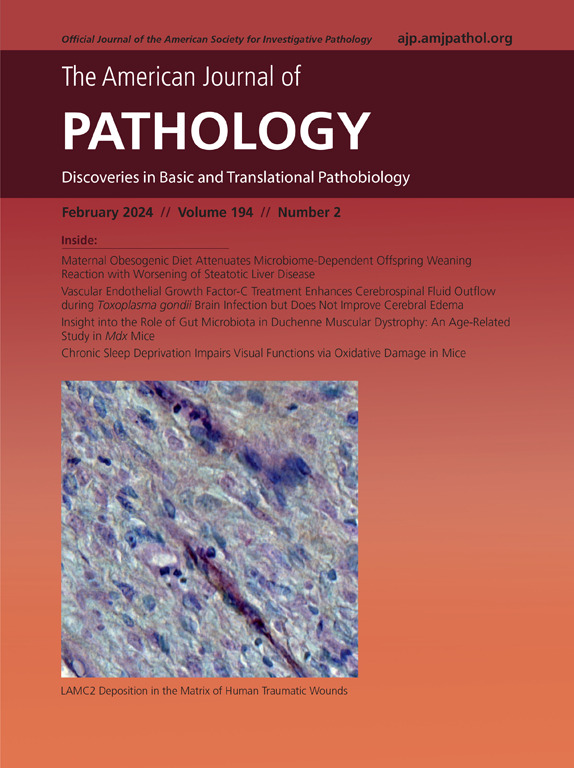Shared Phenotypes of Immune Cells Recruited to the Cornea and the Surface of the Lens in Response to Formation of Corneal Erosions
IF 4.7
2区 医学
Q1 PATHOLOGY
引用次数: 0
Abstract
Injuries to the cornea can lead to recurrent corneal erosions, compromising its barrier function and increasing the risk of infection. Vital as corneal integrity is to the eye's optical power and homeostasis, the immune response to corneal erosions remains poorly understood. It is also unknown whether there is coordinated immune activation between the cornea and other regions of the anterior segment to protect against microbial invasion and limit the spread of inflammation when corneal erosions occur. Herein, a corneal debridement wounding model was used to characterize the immune cell phenotypes populating the cornea in response to erosion formation, and whether and which immune cells are concurrently recruited to the surface of the lens was investigated. The formation of corneal erosions induced an influx of myeloid lineage phenotypes, both M2 macrophages associated with tissue healing and wound repair, and Ly6G+ Ly6C+ myeloperoxidase+ cells resembling neutrophils/polymorphonuclear-myeloid–derived suppressor cells (PMN-MDSCs), with few regulatory T cells, into the corneal stroma under erosion sites. This leukocyte migration into the cornea when erosions develop was paralleled by the recruitment of immune cells, predominantly neutrophils/PMN-MDSCs, to the anterior, cornea-facing lens capsule. Both cornea-infiltrating and lens capsule–associated neutrophil/PMN-MDSC–like immune cells produce the anti-inflammatory cytokine IL-10. These findings suggest a collaborative role for the lens capsule–associated immune cells in preventing infections, controlling inflammation, and maintaining homeostasis of the anterior segment during recurrent corneal erosions.
求助全文
约1分钟内获得全文
求助全文
来源期刊
CiteScore
11.40
自引率
0.00%
发文量
178
审稿时长
30 days
期刊介绍:
The American Journal of Pathology, official journal of the American Society for Investigative Pathology, published by Elsevier, Inc., seeks high-quality original research reports, reviews, and commentaries related to the molecular and cellular basis of disease. The editors will consider basic, translational, and clinical investigations that directly address mechanisms of pathogenesis or provide a foundation for future mechanistic inquiries. Examples of such foundational investigations include data mining, identification of biomarkers, molecular pathology, and discovery research. Foundational studies that incorporate deep learning and artificial intelligence are also welcome. High priority is given to studies of human disease and relevant experimental models using molecular, cellular, and organismal approaches.

 求助内容:
求助内容: 应助结果提醒方式:
应助结果提醒方式:


